Professional wrestling throws are the application of professional wrestling techniques that involve lifting the opponent up and throwing or slamming them down. They are sometimes also called "power" maneuvers, as they are meant to emphasize a wrestler's strength. Many of these moves are used as finishers by various wrestlers, who refer to them by several different names that reflect their gimmick. Moves are listed under general categories whenever possible.
Professional wrestling holds include a number of set moves and pins used by performers to immobilize their opponents or lead to a submission. This article covers the various pins, stretches and transition holds used in the ring. Some wrestlers use these holds as their finishing maneuvers, often nicknaming them to reflect their character or persona. Moves are listed under general categories whenever possible.
A suplex is an offensive move used in sport wrestling as well as amateur wrestling and professional wrestling. It is a throw that involves lifting the opponents and bridging or rolling to slam them on their backs.

Amateur wrestling is a variant of wrestling practiced at Olympic, collegiate, school, or other amateur level competitions. There are two international wrestling styles performed at the Olympic Games: freestyle and Greco-Roman. Both styles are under the supervision of the United World Wrestling (UWW). The amateur style of collegiate wrestling, is practiced in colleges and universities, secondary schools, middle schools, and among younger age groups in the United States. Where the style is not specified, this article refers to the international styles of competition on a mat. The rapid rise in the popularity of the combat sport mixed martial arts (MMA) has increased interest in amateur wrestling, due to its effectiveness within the sport and is considered a core discipline.
Aerial techniques, also known as "high-flying moves" are maneuvers in professional wrestling using the ring's posts and ropes as aids, in many cases to demonstrate the speed and agility of smaller, nimble and acrobatically inclined wrestlers preferring this style instead of throwing or locking the opponent. Due to injuries caused by these high risk moves, some promotions have banned the use of some of them. The next list of maneuvers was made under general categories whenever possible.
Strikes can be offensive moves in professional wrestling, that can sometimes be used to set up an opponent for a hold or for a throw. There are a wide variety of strikes in pro wrestling, and many are known by several different names. Professional wrestlers frequently give their finishers new names. Occasionally, these names become popular and are used regardless of the wrestler performing the technique.
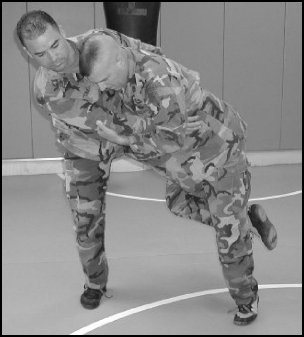
In martial arts and combat sports, a takedown is a technique that involves off-balancing an opponent and bringing them to the ground with the attacker landing on top. The process of quickly advancing on an opponent and attempting a takedown is known as shooting for a takedown, or simply shooting. Takedowns are usually distinguished from throws by amplitude and impact, where the purpose of a throw is to outright eliminate the opponent while purpose of a takedown is to bring the opponent down on the ground, assume a dominant position and then proceed to finish them with jointlocks, chokeholds or ground and pound. In rulesets of many sports such as Judo and Sambo, a well executed throw will end the match while the match will continue on the ground if a takedown is used instead. Takedowns are featured in all forms of wrestling and Judo.
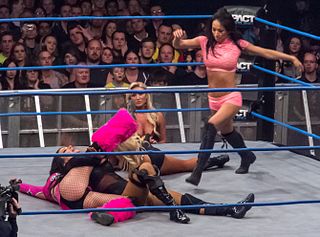
In professional wrestling, a pin is a move where a wrestler holds an opponent's shoulders to the mat. A pinfall is a common victory condition, where the attacker pins an opponent and the referee makes a three count before the opponent gets released from the pin.
In professional wrestling double-team maneuvers are executed by multiple wrestlers instead of one and typically are used by tag teams in tag team matches. Many of these maneuvers are combination of two throws, or submission holds. Most moves are known by the names that professional wrestlers give their "finishing move" names. Occasionally, these names become popular and are used regardless of the wrestler performing the technique. Moves are listed under general categories whenever possible.
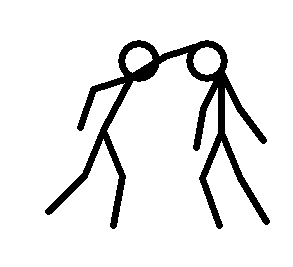
A piledriver is a professional wrestling driver move in which the wrestler grabs their opponent, turns them upside-down, and drops into a sitting or kneeling position, driving the opponent head-first into the mat. The technique is said to have been innovated by Wild Bill Longson.
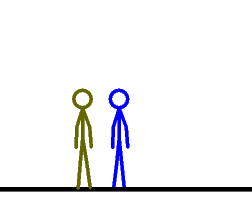
A powerbomb is a professional wrestling throw in which an opponent is lifted and then slammed back-first down to the mat. The standard powerbomb sees an opponent first placed in a standing headscissors position. The opponent is then lifted on the wrestler's shoulders and slammed down back-first to the mat. A prawn hold is commonly used for a pinning powerbomb.

Backbreaker refers to a kind of professional wrestling move which sees a wrestler dropping an opponent so that the opponent's back impacts or is bent backwards against a part of the wrestler's body, usually the knee. The standard version of the move sees the wrestler scoop their opponent horizontally before dropping to one knee, slamming the opponent's back on their other knee.
In professional wrestling, a neckbreaker is any throw or slam that focuses its attack on the opponent's neck. One type of neckbreaker involves the wrestler slamming an opponent's neck against a part of the wrestler's body, usually the knee, head or shoulder. The other type of neckbreaker is a slam technique in which the wrestler throws an opponent to the ground by twisting the opponent's neck. This also refers to a "back head slam" where a wrestler drops to the mat while holding an opponent by their neck.
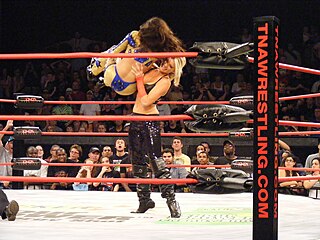
A chokeslam is a type of body slam in professional wrestling, in which a wrestler grasps an opponent's neck, lifts them up, and slams them to the mat. It is common in televised wrestling because it is simple and relatively safe, yet looks powerful on camera. The chokeslam is typically used as a finisher by large wrestlers, further enhancing its perception as a powerful maneuver. This maneuver can be more damaging if the victim is slammed into an object, such as a table, steel chair, or garbage can. It is a common move performed by taller and bigger wrestlers.

A nelson hold is a grappling hold which is executed by one person from behind the opponent, generally when both are on the mat face down with the opponent under the aggressor. One or both arms are used to encircle the opponent's arm under the armpit, and secured at the opponent's neck. Several different nelson holds exist, and they can be separated according to the positioning of the encircling arm(s). A nelson is used to control an opponent or to turn them over onto their back and execute a pin.
A Powerslam or simply Slam is a professional wrestling body slam move in which the wrestler performing the slam falls face-down on top of the opponent. The use of the term "powerslam" usually refers to the front powerslam or the scoop powerslam.

In professional wrestling, a cutter is a 3⁄4 facelockbulldog maneuver. This move sees an attacking wrestler first apply a 3⁄4 facelock before falling backwards to force the opponent face-first to the mat below.

A pin is a predicament in wrestling that ends a match regardless of when it occurs. Some situations that near pins but do not meet the criteria, such as having only one shoulder down or having the defending wrestler blocked in a neck bridge, are rewarded with exposure points known as near fall points or back points.
A roll is the most basic and fundamental skill in gymnastics class. There are many variations in the skill. Rolls are similar to flips in the fact that they are a complete rotation of the body, but the rotation of the roll is usually made on the ground while a flip is made in the air with the hips passing over the head and without any hands touching the ground. Rolls also help recover from a fall safely.

The spladle is a wrestling technique commonly used as a counter and pinning move to single leg take downs. When opponents shoot in and grab the leg the wrestler will drop their weight on the opponents head to prevent advancement of the take down, from there they may reach across the body with their arms to grab hold of the opponents far side leg, once completed they wrap the near side leg with the leg targeted for the take down and roll forward onto the mat. When on the floor it is important to control both legs of the opponent as the wrestler wants to bring the knees of his opponent as close to inline with the opponent's head as possible.










